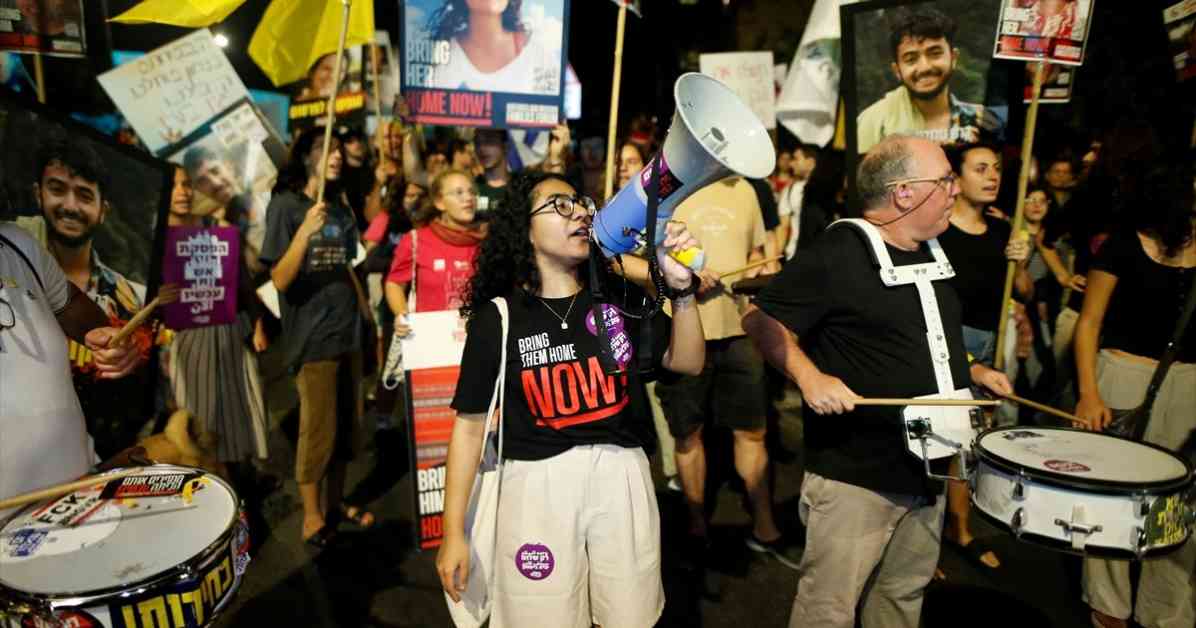Protests in Israel: A Closer Look at Demonstrators
Israel is currently facing a wave of mass protests as pressure mounts on Prime Minister Benjamin Netanyahu and his coalition cabinet to secure a ceasefire deal in Gaza that would bring home the remaining captives. The country has been rocked by demonstrations as hundreds of thousands of Israelis take to the streets, demanding action from the government.
Historical Context of Protests
These protests are not the first mass demonstrations under the current government. From January 2023 to the Hamas-led attack of October 7, during which 1,139 people were killed and 240 taken captive, there were widespread protests against Netanyahu’s judicial changes proposal. The proposal sought to increase the government’s power over the judiciary, leading to accusations of attempting to avoid corruption charges.
Despite popular opposition, Netanyahu’s government managed to pass a key reform in July, limiting the Supreme Court’s power to overrule government decisions based on “reasonableness.” This move further fueled discontent among the public, setting the stage for the current protests.
The families of those taken captive during the October 7 attack have been actively campaigning to pressure the Israeli government since the outbreak of the war on Gaza. Their relentless efforts have contributed to the growing momentum of the protests.
Expanding Demographics of Protesters
While many of the current demonstrators had previously protested against Netanyahu’s judicial reforms, there is a broader representation this time around. Israeli pollster Mitchell Barak noted that young people have also joined the protests, as many of those taken on October 7 were of a similar age. The responsibility for defending the country falls heavily on the shoulders of the youth, increasing their involvement in the demonstrations.
Motivations Behind Protests
The demonstrations are fueled by grief and frustration among the protesters, who suspect that Netanyahu and his cabinet are deliberately stalling a deal to bring back the captives. The discovery of the bodies of six captives by Israeli forces in Gaza further heightened tensions, pushing the protesters to demand immediate action.
The prolonged conflict in Gaza, with over 40,000 Palestinians killed and widespread destruction, has added to the sense of urgency among the demonstrators. Negotiations for a temporary ceasefire last year provided a glimmer of hope for the families of the captives, leading to increased pressure on the government to secure their release.
Focus on Captive Return
The primary demand of the protesters is the return of the captives, with little emphasis on broader Palestinian issues. Israeli analyst Nimrod Flaschenberg highlighted that the protests are centered on bringing the hostages home, with the hope that a deal could potentially lead to an end to the conflict.
Not all Israelis are united in their support for the protests. While the numbers on the streets are significant, Netanyahu’s supporters, particularly those on the right wing and Zionist nationalists, stand firm behind the Prime Minister. Their focus is on holding Hamas accountable for the captives’ fate and ensuring that a deal does not compromise Israel’s security.
Treatment of Protesters
Despite the passionate display of dissent, protesters have faced challenges in their demonstrations. Alon-Lee Green, president of Standing Together, noted that the police have used force against the demonstrators, leading to arrests and disruptions in the protests. The influence of figures like Ben-Gvir in the government has also played a role in shaping the response to the protests.
Subheadings:
The Historical Context of Protests
Expanding Demographics and Motivations
Focus on Captive Return and Challenges Faced by Protesters
In the midst of escalating tensions and mounting pressure on the government, the protests in Israel continue to grow in size and intensity. The call for action to secure the release of the captives remains at the forefront of the demonstrations, with protesters showing no signs of backing down until their demands are met. As the situation unfolds, the resilience of the demonstrators and the response from the government will shape the future of the conflict in Gaza and the political landscape in Israel.



























